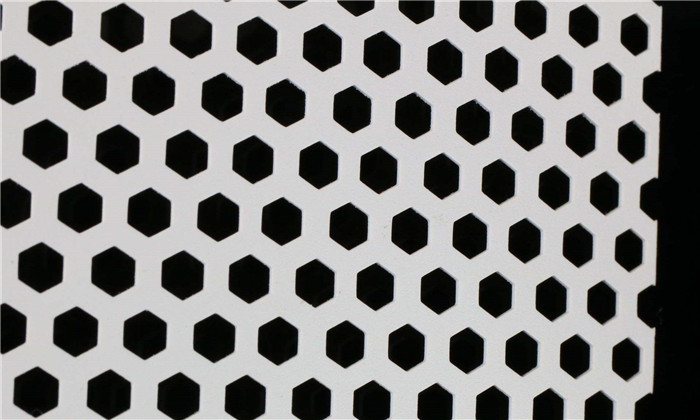How to Accurately Identify the Material of Stainless Steel Perforated Sheet
Source:www.cn-psp.cnAuthor:河北森驰公司 Last updated:2025-06-10 21:44:21 Browse:
Many people assume that since a product is called a stainless steel perforated sheet, it must not rust, contains no iron, and its quality can be determined using a strong magnet. Some even believe that if a stainless steel perforated sheet is attracted by a magnet, it must be good, and if it isn’t, it must be poor quality. However, this understanding is incorrect.
1. Is a stainless steel perforated sheet that is attracted by a magnet always bad?
Absolutely not. The raw materials used for stainless steel perforated sheets are generally classified into austenitic, martensitic, and ferritic stainless steels. Each type has a different magnetic property:
Austenitic stainless steels (such as 304, 316, 321, 310): These materials are non-magnetic or weakly magnetic in their solid solution state. However, after secondary cold working like punching or bending, part of the structure may transform into martensite, resulting in slight magnetic properties. This does not indicate poor quality.
Martensitic and ferritic stainless steels (such as 410, 430): These types naturally have strong magnetic properties and can be easily attracted by magnets.
So, using a magnet alone to determine the quality of a stainless steel perforated sheet is neither scientific nor reliable.
2. Correct methods to identify stainless steel perforated sheet materials
A more accurate and user-friendly method is to use a stainless steel identification solution. This technique is widely used for its simplicity and quick results—it can identify different steel types in just a few seconds.
Here’s how to use it:
Prepare a bottle of stainless steel identification solution (available at most hardware or testing supply stores).
Drop a small amount onto the clean surface of the perforated sheet.
Observe the color change, which indicates the steel grade.
Color indicators for different stainless steel types:
201 stainless steel: Deep red
202 stainless steel: Red
301 stainless steel: Light red
304 stainless steel: Colorless or light yellow
This method is especially useful for quickly identifying stainless steel grades without needing advanced equipment.

Stainless steel Perforated sheet
3. How to choose high-quality stainless steel perforated sheets
Besides material detection, here are other key factors to consider:
Hole precision and consistency: High-quality sheets have uniform hole sizes and smooth edges without burrs.
Surface treatment: Processes like deburring, pickling, passivation, or sandblasting improve corrosion resistance and visual appeal.
Thickness tolerance: Consistent with design specs and essential for further processing.
Manufacturer credentials: Choose suppliers with professional certifications and strong reputations.
Conclusion
Judging the quality of a stainless steel perforated sheet based solely on magnetic attraction is misleading. By understanding the types of stainless steel and applying the correct identification methods, you can avoid being misled in procurement or engineering applications. Whether in architectural decoration, ventilation, filtration, or industrial safety, selecting the right stainless steel perforated sheet directly impacts aesthetics, performance, and durability.
If you need professional assistance in choosing materials, testing stainless steel grades, or customizing perforated sheet solutions, feel free to contact our expert team. We’re here to help with comprehensive, reliable support.
